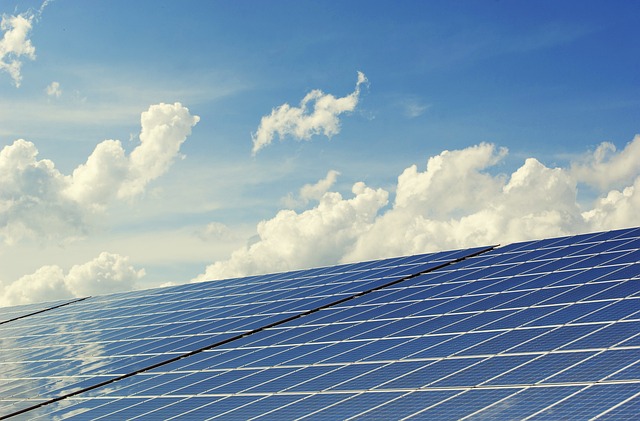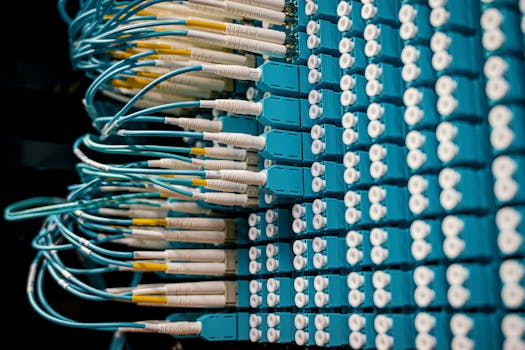“Empower Your Cool: Mastering Solar-Powered Refrigeration Wiring.”
Wiring a solar-powered refrigeration system involves integrating solar panels, a charge controller, batteries, and the refrigeration unit to create an efficient and sustainable energy solution. This system harnesses solar energy to power refrigeration, making it ideal for off-grid locations or reducing reliance on traditional power sources. Proper wiring is crucial for ensuring safety, efficiency, and optimal performance. This guide will outline the essential components, wiring techniques, and best practices for setting up a solar-powered refrigeration system effectively.
Understanding Solar-Powered Refrigeration Systems
Understanding solar-powered refrigeration systems is essential for anyone looking to harness renewable energy for cooling needs. These systems utilize solar panels to convert sunlight into electricity, which then powers refrigeration units. This innovative approach not only reduces reliance on conventional energy sources but also offers a sustainable solution for preserving food and other perishable items, especially in remote areas where electricity supply may be inconsistent or unavailable.
At the core of a solar-powered refrigeration system is the photovoltaic (PV) panel, which captures sunlight and converts it into direct current (DC) electricity. This electricity can be used immediately to power a refrigeration unit or stored in batteries for later use. The choice of solar panels is crucial, as their efficiency and output will directly impact the performance of the refrigeration system. Typically, monocrystalline panels are favored for their high efficiency and space-saving design, making them ideal for installations where space is limited.
Once the solar panels are installed, the next component in the system is the charge controller. This device regulates the voltage and current coming from the solar panels to ensure that the batteries are charged safely and efficiently. It prevents overcharging, which can damage the batteries, and also protects against deep discharging, which can shorten their lifespan. Selecting a charge controller that matches the specifications of both the solar panels and the batteries is vital for optimal performance.
Batteries play a critical role in solar-powered refrigeration systems, as they store the energy generated by the solar panels for use during periods of low sunlight or at night. Lead-acid batteries are commonly used due to their affordability and reliability, but lithium-ion batteries are gaining popularity for their longer lifespan and higher energy density. When choosing batteries, it is important to consider the total energy requirements of the refrigeration unit, as well as the expected duration of use without sunlight.
The inverter is another key component in a solar-powered refrigeration system. It converts the DC electricity stored in the batteries into alternating current (AC) electricity, which is typically required by most refrigeration units. Selecting an inverter with the appropriate capacity is essential, as it must be able to handle the starting surge of the refrigeration compressor, which can be significantly higher than its running power. Additionally, some systems may utilize DC refrigeration units that can operate directly from the solar panels, eliminating the need for an inverter altogether.
When wiring a solar-powered refrigeration system, it is crucial to follow proper electrical practices to ensure safety and efficiency. This includes using appropriately sized wires to handle the current load, securing all connections to prevent corrosion, and ensuring that all components are properly grounded. Furthermore, it is advisable to incorporate fuses or circuit breakers to protect the system from overloads and short circuits.
In conclusion, understanding the components and functionality of solar-powered refrigeration systems is vital for anyone interested in implementing this sustainable technology. By effectively harnessing solar energy, these systems provide an eco-friendly solution for refrigeration needs, particularly in areas where traditional power sources are unreliable. As the world increasingly shifts towards renewable energy, mastering the intricacies of solar-powered refrigeration will not only contribute to energy independence but also promote environmental stewardship.
Essential Components for Wiring Solar Refrigeration

Wiring a solar-powered refrigeration system requires a clear understanding of the essential components involved in the process. At the heart of this system is the solar panel, which captures sunlight and converts it into electricity. When selecting solar panels, it is crucial to consider their wattage and efficiency, as these factors will determine the overall energy output. Typically, a solar panel system for refrigeration will consist of multiple panels connected in series or parallel to meet the energy demands of the refrigeration unit.
Once the solar panels are in place, the next component to consider is the charge controller. This device plays a vital role in regulating the voltage and current coming from the solar panels to the batteries. By preventing overcharging and deep discharging, the charge controller ensures the longevity of the battery bank, which is another essential component of the system. When choosing batteries, it is important to select deep-cycle batteries designed for solar applications, as they can withstand repeated charging and discharging cycles without significant degradation.
After establishing the solar panels and battery bank, the next step involves connecting the inverter. The inverter is responsible for converting the direct current (DC) generated by the solar panels and stored in the batteries into alternating current (AC), which is typically required by most refrigeration units. When selecting an inverter, it is essential to ensure that it can handle the peak load of the refrigeration system, as well as any additional appliances that may be connected to the system.
In addition to these primary components, wiring plays a crucial role in the overall efficiency and safety of the solar-powered refrigeration system. Proper gauge wiring is necessary to minimize voltage drop and ensure that the system operates efficiently. It is advisable to use stranded copper wire, as it is more flexible and easier to work with than solid wire. Furthermore, using appropriate connectors and terminals will help maintain a secure and reliable connection between components.
As you begin the wiring process, it is essential to follow a systematic approach. Start by connecting the solar panels to the charge controller, ensuring that the positive and negative terminals are correctly aligned. Next, connect the charge controller to the battery bank, again paying close attention to the polarity. Once the batteries are connected, you can proceed to wire the inverter to the battery bank, ensuring that the inverter is turned off during this process to prevent any accidental short circuits.
After the inverter is connected, the final step is to wire the refrigeration unit to the inverter. This connection should also be made with care, ensuring that the refrigeration unit is compatible with the inverter’s output. Once all connections are made, it is advisable to double-check each connection for security and correctness before powering on the system.
In conclusion, wiring a solar-powered refrigeration system involves several essential components, including solar panels, charge controllers, batteries, inverters, and appropriate wiring. By understanding the function of each component and following a systematic approach to wiring, you can create an efficient and reliable solar refrigeration system. This not only provides a sustainable solution for cooling but also contributes to energy independence and environmental conservation. With careful planning and execution, you can harness the power of the sun to keep your perishables fresh and your energy bills low.
Step-by-Step Guide to Wiring Your Solar Refrigeration System
Wiring a solar-powered refrigeration system can seem daunting, but with a clear understanding of the components and a systematic approach, it becomes a manageable task. To begin, it is essential to gather all necessary materials, including solar panels, a charge controller, batteries, an inverter, and the refrigeration unit itself. Each component plays a crucial role in ensuring the system operates efficiently and effectively.
First, start by determining the energy requirements of your refrigeration unit. This involves calculating the total wattage needed to run the unit and any additional devices you may want to power. Once you have this information, you can select appropriately sized solar panels and batteries. It is advisable to choose panels that can generate more power than your system requires, allowing for cloudy days or increased energy consumption.
Next, install the solar panels in a location that receives maximum sunlight exposure throughout the day. The panels should be mounted securely, ideally at an angle that optimizes solar gain. After positioning the panels, connect them in parallel or series, depending on your voltage requirements. If you are unsure, consult the specifications of your charge controller to ensure compatibility.
Once the solar panels are connected, the next step is to wire them to the charge controller. The charge controller is a critical component that regulates the voltage and current coming from the solar panels to the batteries, preventing overcharging and ensuring longevity. Connect the positive and negative leads from the solar panels to the corresponding terminals on the charge controller. It is important to follow the manufacturer’s instructions carefully to avoid any potential damage.
After wiring the solar panels to the charge controller, the next phase involves connecting the batteries. Batteries store the energy generated by the solar panels, making it available for use when sunlight is not available. Connect the batteries in parallel to maintain the same voltage while increasing capacity. Again, ensure that you connect the positive and negative terminals correctly to avoid short circuits. Once the batteries are connected, link them to the charge controller, ensuring that the connections are secure and properly insulated.
With the batteries in place, the next step is to connect the inverter. The inverter converts the direct current (DC) stored in the batteries into alternating current (AC), which is what most refrigeration units require. Connect the inverter to the batteries, ensuring that the connections are tight and secure. It is advisable to use appropriately rated cables to handle the current load safely.
Finally, connect the refrigeration unit to the inverter. Before doing so, double-check all connections to ensure they are secure and correctly wired. Once everything is connected, turn on the system and monitor its performance. It is essential to check the charge controller for any error messages and ensure that the batteries are charging correctly.
In conclusion, wiring a solar-powered refrigeration system involves a series of methodical steps that, when followed carefully, can lead to a successful installation. By understanding the role of each component and ensuring proper connections, you can create an efficient and sustainable refrigeration solution. As you gain experience with solar technology, you may find opportunities to expand your system or integrate additional renewable energy sources, further enhancing your energy independence.
Common Wiring Mistakes to Avoid in Solar Refrigeration Systems
When setting up a solar-powered refrigeration system, understanding the common wiring mistakes is crucial for ensuring optimal performance and longevity of the system. One of the most frequent errors is improper sizing of the wiring. Using wires that are too small for the current load can lead to overheating, voltage drops, and ultimately, system failure. It is essential to calculate the appropriate wire gauge based on the distance from the solar panels to the refrigerator and the total current draw of the system. By adhering to the National Electrical Code (NEC) guidelines, you can select the right wire size that minimizes resistance and maximizes efficiency.
Another common mistake involves neglecting to use the correct type of connectors and terminals. Many DIY enthusiasts may opt for generic connectors, but this can lead to poor connections that increase resistance and generate heat. Instead, it is advisable to use connectors specifically designed for solar applications, which are often weather-resistant and provide a secure fit. Additionally, ensuring that all connections are clean and free from corrosion is vital, as even minor oxidation can impede performance.
Furthermore, failing to properly ground the system is a significant oversight that can lead to safety hazards and equipment damage. Grounding not only protects the system from electrical surges but also ensures that any stray currents are safely directed away from sensitive components. It is important to follow local electrical codes and best practices for grounding, which typically involve connecting the system to a grounding rod or a suitable grounding point.
Inadequate planning for the layout of the wiring can also result in complications. A disorganized wiring setup can lead to confusion during maintenance and troubleshooting, making it difficult to identify issues when they arise. To avoid this, it is beneficial to create a clear wiring diagram before installation. This diagram should outline the connections between the solar panels, charge controller, batteries, and refrigerator, providing a visual reference that simplifies future repairs or upgrades.
Moreover, overlooking the importance of fuses and circuit breakers is another mistake that can have serious consequences. These protective devices are essential for preventing overcurrent situations that could damage the system. Installing appropriately rated fuses or circuit breakers at strategic points in the wiring can safeguard against electrical faults and ensure that the system operates within safe parameters. It is crucial to select fuses that match the current ratings of the components they protect, as this will provide the necessary level of protection without compromising performance.
Additionally, many individuals underestimate the impact of environmental factors on wiring. Exposure to extreme temperatures, moisture, and UV radiation can degrade wiring insulation over time, leading to potential failures. Therefore, using high-quality, weather-resistant wiring and protective conduits can significantly enhance the durability of the system. It is also wise to periodically inspect the wiring for signs of wear or damage, allowing for timely repairs that can prevent larger issues down the line.
In conclusion, avoiding these common wiring mistakes is essential for the successful installation and operation of a solar-powered refrigeration system. By ensuring proper wire sizing, using appropriate connectors, grounding the system correctly, planning the wiring layout, incorporating protective devices, and considering environmental factors, you can create a reliable and efficient solar refrigeration setup. Taking the time to address these aspects will not only enhance the performance of your system but also extend its lifespan, ultimately leading to a more sustainable and cost-effective solution for your refrigeration needs.
Q&A
1. **Question:** What are the basic components needed to wire a solar-powered refrigeration system?
**Answer:** The basic components include solar panels, a charge controller, a battery bank, an inverter, and the refrigeration unit.
2. **Question:** How do you connect the solar panels to the charge controller?
**Answer:** Connect the positive and negative terminals of the solar panels to the corresponding input terminals on the charge controller.
3. **Question:** What is the purpose of the charge controller in the system?
**Answer:** The charge controller regulates the voltage and current coming from the solar panels to prevent overcharging the battery bank.
4. **Question:** How do you wire the inverter to the battery bank and the refrigeration unit?
**Answer:** Connect the inverter’s positive and negative terminals to the battery bank, then connect the output terminals of the inverter to the refrigeration unit’s power input.
Conclusion
To wire a solar-powered refrigeration system, first, ensure you have all necessary components, including solar panels, a charge controller, batteries, an inverter, and the refrigeration unit. Begin by connecting the solar panels to the charge controller, ensuring proper polarity. Next, connect the charge controller to the batteries to store energy. Then, link the batteries to the inverter, which converts DC power to AC power for the refrigeration unit. Finally, connect the inverter to the refrigeration system, ensuring all connections are secure and insulated. Regularly check the system for any issues and maintain the components for optimal performance. Proper wiring and installation will ensure efficient operation of the solar-powered refrigeration system.




